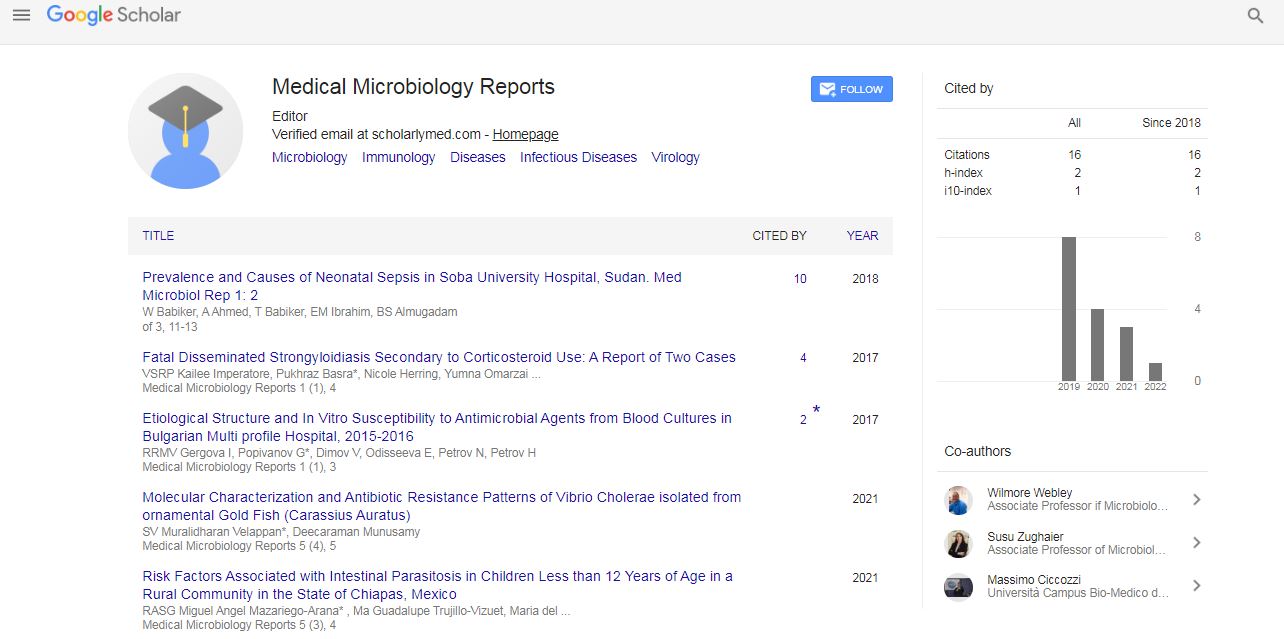Protein stability and subunit assembly of nylon hydrolase: Structural basis discriminating correct subunit assembly, aggregation, and intracellular degradation of precursor protein
Seiji Negoro
University of Hyogo, Japan
: Med Microbiol Rep
Abstract
Protein-protein interactions leading to correct subunit assembly play important roles in protein stability and/ or various biological functions, which could include the following: i) regulation of enzyme activities by the allosteric effect, ii) generation of an active center by utilizing several catalytic/substrate-binding residues located in different subunits, and iii) generation of a multifunctional enzyme by integrating several functions initially compartmentalized in different enzyme subunits into a single oligomeric enzyme. In addition, the stability of a monomeric protein is generally improved by the oligomerization of the protein. Nylon hydrolase (NylC) is one of the three enzymes (NylABC) responsible for the degradation of the by-products of nylon-6 manufacture (cyclic and linear oligomers of 6-aminohexanoate (Ahx) with a degree of polymerization greater than three) and various aliphatic nylons (nylon-6, nylon-66, etc.) (Fig. 1) (1-8). NylC is initially expressed as an inactive precursor (36 kDa). However, the precursor is cleaved auto-catalytically at Asn266/Thr267 to generate an active enzyme composed of α (27 kDa) and β (9 kDa) subunits. Four αβ heterodimers (molecules A-D) form a doughnut-shaped quaternary structure (Fig. 2). In this study, the thermostability of the parental NylC was altered by amino acid substitutions located at the A/D interface (D122G/H130Y/D36A/L137A) or the A/B interface (E263Q) and spanned a range of 47 °C (5,6). From the analytical centrifugation data of the various mutant enzymes, we conclude that the assembly of the monomeric units is dynamically altered by the mutations. Considering structural, biophysical, and biochemical analyses, we discuss the structural basis of the stability of nylon hydrolase. Finally, we propose a model that can predict whether the fate of the nascent polypeptide will be correct subunit assembly, inappropriate protein-protein interactions causing aggregation, or intracellular degradation of the polypeptide.
Biography
Seiji Negoro is the Professor at the Department of Applied Chemistry, Graduate School of Engineering, University of Hyogo. He has completed PhD from Graduate School of Engineering, Osaka University, Japan in 1982. He appointed as Research associate at the Department of Biotechnology, Osaka University from 1982-1992. He served as an Associate professor at the Department of Biotechnology, Osaka University from 1992-1997. His Scientific research field focuses on Enzymology, Protein engineering, Environmental biotechnology.
E-mail: negoro@eng.u-hyogo.ac.jp
 Spanish
Spanish  Chinese
Chinese  Russian
Russian  German
German  French
French  Japanese
Japanese  Portuguese
Portuguese  Hindi
Hindi 
